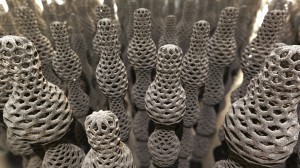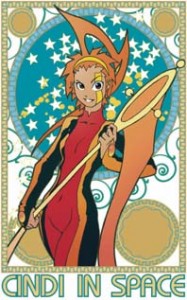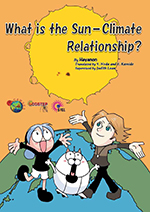I have long (one year) wanted to feature an interview with Vanessa Clive, Nanotechnology Policy Advisor; Industry Sector, at Industry Canada but have been distracted from sending interview questions until about several weeks ago. (Sometimes, I lose track *of time.)
Here then are the interview questions I asked and the answers Vanessa very kindly provided,
1. Could you describe your role?
Industry Canada’s mandate is to help make Canadian industry more productive and competitive in the global economy, thus improving the economic and social well-being of Canadians. As an emerging/nascent technology, nanotechnology can help contribute towards this objective. Our role vis a vis nanotechology is to:
- better understand Canadian capabilities, strengths and expertise
- contribute to effective policy development
- contribute to the development of a supportive business environment for innovation and commercialization
2. Recently, you helped organize an event in Washington, DC (International Symposium on Assessing the Economic Impact of Nanotechnology, March 27-28, 2012). Could you give a brief overview of why this was needed, who attended, & what happened?
The Symposium was organized jointly by the OECD Working Party on Nanotechnology (WPN) and the National Nanotechnology Coordinating Office for the U.S. National Nanotechnology Initiative (NNI), and hosted by the American Association for the Advancement of Science (AAAS). I was a member of the OECD WPN Steering Committee which worked with the NNI to organize the event.
Some 200 people participated from OECD and non-OECD countries, representing a broad spectrum of sectors, industries, and areas of expertise. In addition to plenary sessions, industry break-out discussions were organized on advanced materials, food packaging, transportation, nanomedicine, energy, and electronics.
The decision to hold the event recognized the important potential contribution of nanotechnology to innovation, as reflected in rising R&D investments over the past decade. OECD member countries wish to explore ways to assess returns to these investments and the broader economic impacts of nanotechnology more generally, as well as the challenges for effective innovation policy development in this area.
The agenda and presentations can be viewed at http://nano.gov/node/729. Four background papers on related topics were also commissioned for the Symposium and can be found at the same site.
3. What can be said about nanotechnology’s economic impacts and what information (e.g. bibliometric measures, no. of patents, etc.) is being used to arrive at that conclusion?
Given the still relatively early stage of developments, the range of potential applications, and other factors, there are major challenges to estimating potential impacts. Holding this Symposium was intended to provide a start to develop useful indicators and other assessment tools.
4. So, how is Canada doing relative to the international scene?
As discussed above, given the lack of measures, it is difficult to assess our relative position. However, Canadian federal and provincial governments have invested increasing amounts in nanotechnology R&D over the past decade or so. These investments have supported an array of government funding programs and contributed to the establishment of a world-class R&D infrastructure and research community and a growing number of companies involved in nanotechnology across industry sectors in Canada.
5. Is there anything that stands out from the symposium?
It was clear from the level of attendance, presentations, and discussions which took place, that there is widespread interest in the symposium topics. To learn more about the event, I would encourage interested people to visit the website where presentations and background papers are posted – http://nano.gov/node/729.
6. Are there any Industry Canada plans in the works for developing new assessment tools given that, unlike many countries, Canada does not have a national nanotechnology funding hub?
We are working with the OECD to develop useful tools that would enable us to estimate or measure the economic impacts of nanotechnology.
7. Are there any plans for a nanotechnology ‘road map’ similar to the digital media road map? Or perhaps there’s something else in the works?
Industry Canada is focused on assisting Canadian industry to grow, compete in the global economy, and create jobs. In order to do so we are building the department’s knowledge base about Canadian activities and capabilities, contributing to sound policy development in domestic and international for a, and contributing to building a supportive business environment for responsible innovation and commercialization in this field.
Thank you for the insight into the Canadian nanotechnology situation and the issues around economic impacts as per Industry Canada and tor taking the time to do this . Also, I am very happy to see the link to the presentations and background papers for the March 2012 nanotechnology and economic impacts event in Washington, DC (first mentioned in my Jan. 27, 2012 posting).
I did briefly visit the website which is a US National Nanotechnology Initiative website. The event page for which Vanessa provided a link hosts the background papers and links to other pages hosting the presentations and the agenda providing a rich resource for anyone interested in the issue of nanotechnology and its possible economic impacts.
* Changed preposition from ‘to’ to ‘of’ on Sept. 19, 2013.


